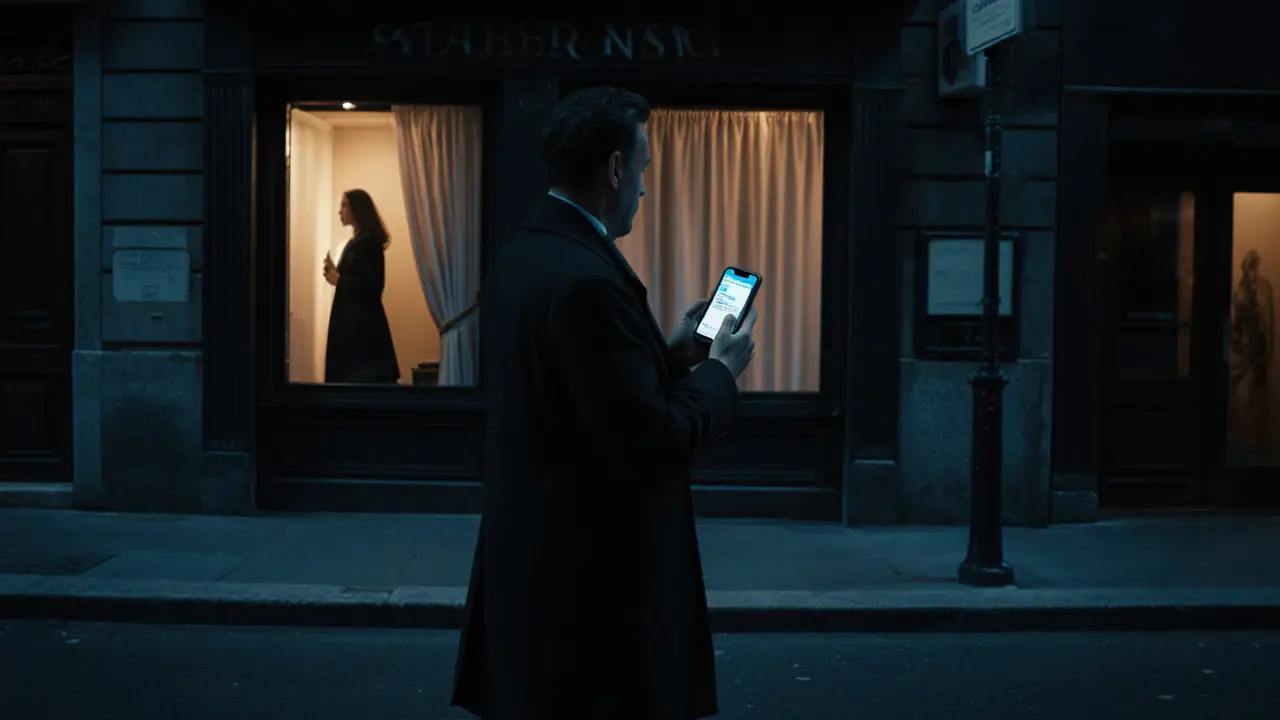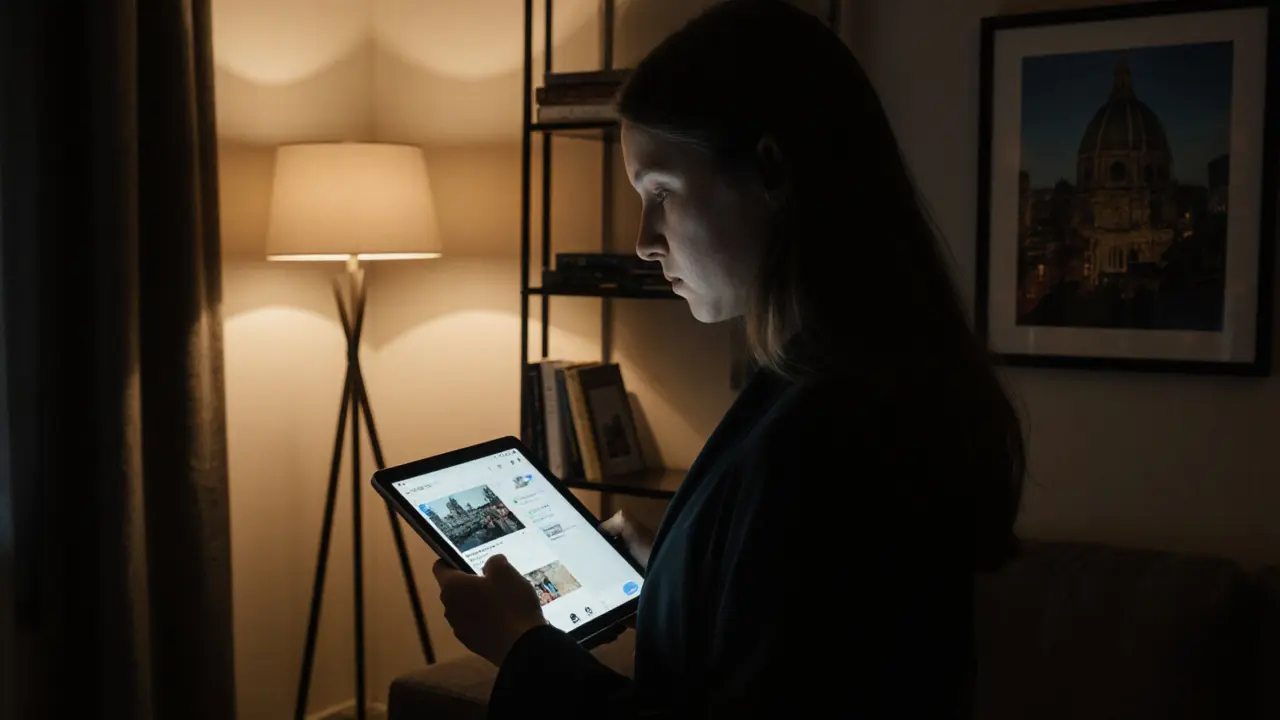When you think of Milan, you picture designer boutiques, Michelin-starred restaurants, and the last of the fashion week buzz. But beneath the surface, there’s another side to the city-one that’s quietly evolving. The escort industry in Milan isn’t what it was ten years ago. It’s not about street corners or shady phone numbers anymore. It’s digital, regulated, and increasingly professional. If you’re wondering what’s next for this sector, here’s what’s actually happening right now.
It’s Not Illegal, But It’s Not Officially Legal Either
Italy doesn’t ban prostitution itself. That’s important. What’s illegal is organized prostitution-brothels, pimping, advertising, and operating as a business. But individual sex workers? They’re not breaking the law if they work alone, without third parties, and without public solicitation. In Milan, most escort services operate in this gray zone. They don’t run clubs. They don’t hire staff. They use private websites, encrypted apps, and social media to connect with clients.
This legal ambiguity is the foundation of everything else. It forces the industry to stay low-key. No storefronts. No billboards. No ads on Google. Instead, you’ll find discreet profiles on platforms like SeekingArrangement, OnlyFans, or private Telegram channels. Clients come through referrals, word-of-mouth, or curated directories that update weekly. The lack of regulation means there’s no oversight, no licensing, and no safety standards. But it also means the industry can adapt fast.
Digital Transformation Is the New Normal
Five years ago, an escort in Milan might have relied on a website built in 2010 and a single phone number. Today, the best operators run full digital businesses. They have professional photography, video portfolios, encrypted booking systems, and even AI chatbots that handle initial inquiries. Many use platforms like OnlyFans to build a subscriber base before offering in-person meetings. Some even offer virtual companionship sessions-video calls, roleplay, or just someone to talk to-before transitioning to physical meetups.
Payment methods have changed too. Cash is still common, but more people now use cryptocurrency or prepaid cards to avoid traceable bank transfers. Venmo and PayPal are risky in Italy because they flag adult-related transactions. So, services like Monero or BitPay are becoming popular. This isn’t just about privacy-it’s about survival. Banks in Milan have started closing accounts linked to escort work, even if the person never broke the law. Digital payments help them stay under the radar.
Who’s Working Now? A Shift in Demographics
The typical escort in Milan used to be a young woman from Eastern Europe, often with limited Italian skills. That’s changing. Today, you’ll find Italian women in their late 20s and 30s-university graduates, former models, even ex-lawyers-running their own businesses. Many are bilingual, tech-savvy, and treat this as a freelance career. They set their own rates, choose their clients, and work on their own schedule.
There’s also a growing number of male escorts and non-binary service providers. While still a small portion of the market, they’re gaining visibility. Their clients aren’t just wealthy men anymore. They include women, couples, and even older professionals looking for companionship without the pressure of a romantic relationship. The demand for emotional connection is rising faster than demand for purely physical encounters.

Client Profiles Are Evolving Too
The old stereotype of the rich businessman paying for an escort is outdated. Yes, some clients are high-net-worth individuals-CEOs, investors, foreign diplomats. But more and more, clients are regular people: engineers on business trips, students studying abroad, single parents who just want to feel seen. The rise of remote work has made Milan a hub for international freelancers. Many stay for weeks at a time. They don’t have local friends. They’re lonely. And they’re willing to pay for genuine connection.
There’s also a quiet trend among older clients-men and women over 50-who feel invisible in mainstream dating apps. They don’t want to date. They don’t want drama. They want someone who listens, doesn’t judge, and shows up on time. These clients often pay more, book longer sessions, and return regularly. They’re the most loyal segment of the market.
Security and Safety Are Becoming Priority One
With no legal protections, safety is entirely self-managed. The best escorts in Milan have strict protocols. They screen clients using ID verification apps, require deposits before meetings, and share their location with trusted friends. Some use smart locks that only open for pre-approved guests. Others hire security consultants who audit their routines and suggest improvements.
There’s also a growing network of peer support. Women and non-binary workers meet in private online groups to share red flags, warn about dangerous clients, and exchange legal advice. One group, called “Milan Safe Network,” has over 1,200 members. They’ve created a shared database of flagged profiles and phone numbers. It’s not official. But it’s effective. In 2024, they helped prevent at least 37 attempted scams or violent incidents.

The Rise of the “Companion” Brand
The word “escort” is fading. In Milan, many workers now call themselves “companions.” It’s not just semantics. It’s a rebranding strategy. They emphasize emotional support, cultural guidance, language practice, or even attending events together. A companion might take you to a gallery opening, help you navigate the Duomo, or simply sit with you while you eat dinner. This shift makes the service feel less transactional-and harder for authorities to target.
Some even offer “cultural escort” packages: a local guide who also provides company. These services are marketed as “luxury experiences,” not sexual encounters. Clients pay €300-€800 for a 4-hour outing that includes dinner, museum tickets, and conversation. The sex? Optional. The connection? Always there.
What’s Next? Predictions for 2026
Here’s what’s likely to happen in the next 12-18 months:
- More regulation pressure: Milan’s city council is considering a pilot program to license independent sex workers. It’s not about banning-just formalizing. Think of it like a freelance permit.
- AI companionship tools: Chatbots and virtual assistants are already being used to filter clients. In 2026, expect AI to handle scheduling, intake questions, and even emotional check-ins before a meeting.
- Increased competition from abroad: With Italy’s cost of living rising, more workers from Romania, Ukraine, and Colombia are moving to Milan. They offer lower rates, forcing locals to differentiate through quality, not price.
- Legal challenges: A few cases are working their way through Italian courts. One woman is suing a bank for closing her account without cause. If she wins, it could force financial institutions to stop discriminating against sex workers.
The industry won’t disappear. It won’t go mainstream. But it will become more professional, more visible in its own quiet way, and more resilient.
Final Thoughts: It’s About Choice, Not Crime
The future of the escort industry in Milan isn’t about morality. It’s about autonomy. People are choosing this work because it gives them control-over their time, their income, and their boundaries. The city doesn’t need to legalize it to make it safer. It just needs to stop pretending it doesn’t exist.
If you’re visiting Milan and curious about this side of the city, remember: the best services aren’t the loudest. They’re the ones who treat you like a person, not a transaction. And that’s not going away anytime soon.
Is it legal to hire an escort in Milan?
Yes, but with major limits. It’s not illegal for an individual to offer or pay for companionship services. However, it’s illegal to run a brothel, advertise publicly, hire staff, or profit from someone else’s work. Most escorts in Milan operate as independent contractors, avoiding anything that looks like organized business. This keeps them legally safe-but also without protection.
How do clients find escorts in Milan today?
Most use private websites, encrypted messaging apps like Telegram, or curated directories that update weekly. Social media profiles on Instagram or OnlyFans are common too, but they’re carefully managed to avoid detection. Referrals from past clients remain the most trusted method. Google ads and public listings are rare because they risk police attention.
Are there male or non-binary escorts in Milan?
Yes, and their numbers are growing. While still a smaller segment, male and non-binary companions are increasingly visible. Their clients include women, couples, and older professionals seeking emotional connection rather than just physical intimacy. Many market themselves as “companions” or “cultural guides” to avoid stigma and legal risk.
What’s the average cost of an escort in Milan?
Rates vary widely. A basic 1-hour meeting might cost €150-€250. Longer sessions (3-5 hours) with dinner or travel can run €500-€1,200. High-end companions with luxury experience or language skills charge €800-€2,000 for a full evening. Rates for male and non-binary escorts are similar, though some offer lower prices to build their client base.
Is it safe to use escort services in Milan?
Safety depends entirely on the individual. The best providers use ID verification, pre-meeting screening, location sharing with trusted contacts, and secure payment methods. There are risks-scams, overcharging, or aggressive clients-but organized crime is rare. Most workers are independent and avoid dangerous situations. Always research, ask for references, and never meet alone in unfamiliar places.
Why do people in Milan choose this work?
Many are drawn by flexibility, high earnings, and control over their schedule. Some are students, artists, or professionals who need extra income without a 9-to-5. Others enjoy the emotional connection aspect-it’s not just sex, it’s being seen and heard. For many, it’s a conscious choice to work on their own terms, outside traditional employment structures.
Will the Italian government crack down on escort services?
A full crackdown is unlikely. The industry is too decentralized and too quiet. Instead, officials are exploring pilot programs to license independent workers, similar to freelance permits. This wouldn’t legalize brothels, but it could give workers legal recognition, access to healthcare, and protection from exploitation. Change is coming-but slowly, and from the ground up.
For those who want to understand Milan beyond the fashion shows and coffee shops, the escort industry offers a raw, unfiltered look at modern relationships, economic survival, and personal freedom. It’s not glamorous. But it’s real.







Write a comment